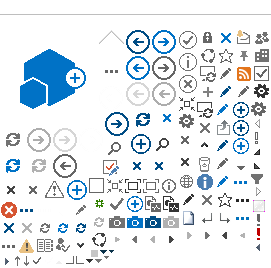Your commercial client needs a product liability policy if they want coverage in the event that a product failure causes direct bodily injury or property damage.
But that’s the extent of product liability insurance. If a client could face additional financial expenses if forced to pull a product off the shelf, they might need a product recall policy, as well.
Here’s what you need to know about the state of each market.
Liability: Before the Fall
According to Lindy Gardner, senior casualty underwriter at Admiral Insurance Company, who leads a division that addresses product liability risks encompassing health, nutrition and lifestyle, the product liability insurance market has evolved as the FDA has become more stringent with guidelines based on current good manufacturing practices (CGMPs), which relate to storing, labeling and distributing ingredients and finished products.
“Anybody who is in the chain of supply faces some level of compliancy to CGMPs,” Gardner explains. “As the FDA becomes stricter with the investigations and inspections they do with different risks in this class of business, it is becoming tougher.”
Additionally, different players continue to enter and exit the market—an ebb and flow that causes rate fluctuation, Gardner says. “When risks are under scrutiny, it’s tougher to place them with certain carriers and there becomes less competition when they’ve got issues with CGMPs or FDA compliance.” On the other end of the spectrum are what Gardner calls “slam-dunk risks” that have no issues complying with CGMPs. “When they’re easier to review, there are definitely more competitors in the market, which helps make prices more aggressive,” she says.
Moving forward, pay attention to developments around Prop 65—the safe water act proposed in California years ago to notify residents if any of a list of 800 chemicals is present either in a product or on the premises where the product is made. Although the law applies to only one state, it mandates that anybody doing business with someone in California must label their products with Prop 65 warnings.
“That could mean if you were a manufacturer in the state of Minnesota and you sell via the Internet to a resident in California, you must include a Prop 65 warning,” Gardner explains. “The state administers a civil fine or penalty, so that coverage is really up and coming—something a lot of the legal firms are really trying to focus on right now from the standpoint of catching people off guard and requesting time-sensitive lawsuits.”
Recall: After the Fact
In contrast to a product liability policy, a product recall policy provides coverage for first- and third-party product recall expenses including public relations and media control, as well as any costs involved with transporting faulty products to either store, editing or disposing of them, hiring additional staff to perform any of those services and refunds, repairs or replacements.
Most product recall policies also include coverage for legal defenses and disbursements, forensic inspections and any accompanying internal investigations, according to Nicole Greene, senior broker at Burns & Wilcox, who works with product recall risks frequently in relation to professional and management liability.
And while clients can only file product liability claims after a product has caused bodily injury or property damage, property recall coverage can kick in much earlier: as soon as an imminent bodily threat is identifiable, Greene says.
As the economy continues to pick up, “we’re seeing a lot of new products come to market” for product recall—particularly on the components side, Greene says. “People are going back out there buying and buying and buying, but we’re getting all these component parts from various countries and there’s that quality control issue.”
Although “everything’s pretty stable” for product recall insurance from a pricing standpoint—“some of the carriers that used to offer it have exited, but then we have new capacity coming in,” Greene says—expect broader enhancements to the product recall form and keep an eye on product guarantee coverage as a “cutting-edge” development in the marketplace.
“Let’s say I give you a steering wheel but something’s wrong electronically that might pose imminent danger or might have already caused bodily injury,” Greene says. “Product guarantee coverage will pay for not only the cost of that steering wheel, but also the actual cost of the entire product.”
For tips on how your agency can sell more product liability and recall policies, keep an eye on IAmagazine.com and next week’s edition of the Markets Pulse e-newsletter.
Jacquelyn Connelly is IA senior editor.
